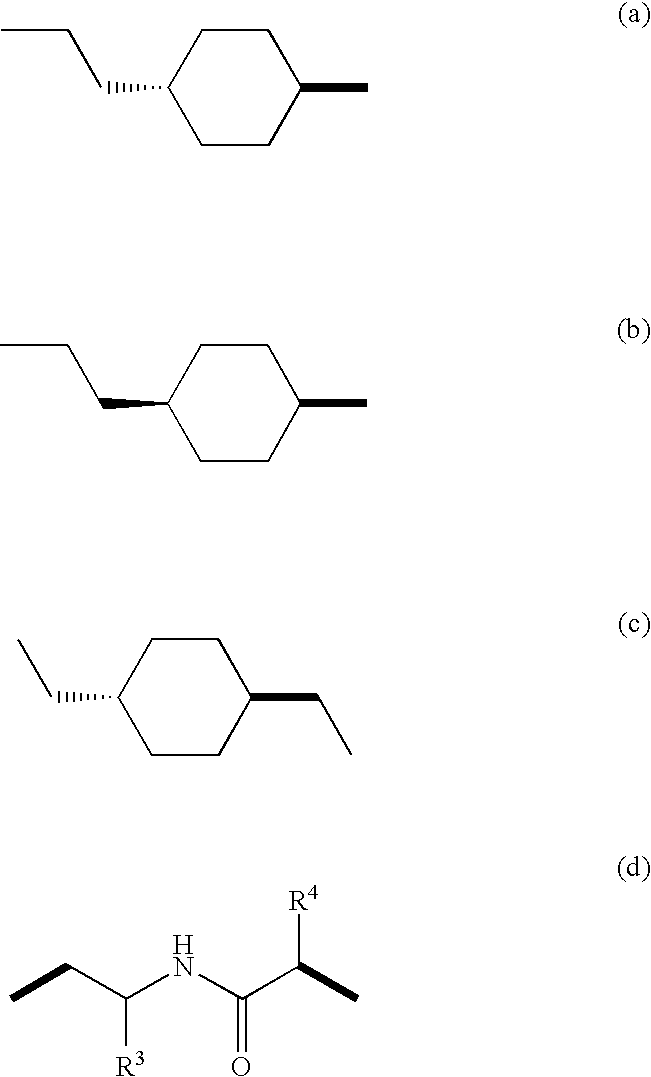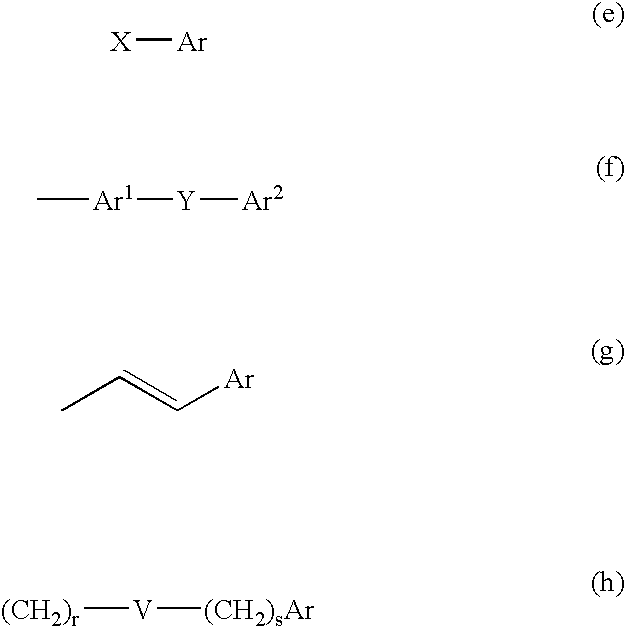Muscarinic acetylchoine receptor antagonists
a technology of acetylchoine receptor and muscarinic acetylchoine, which is applied in the field of new drugs, can solve the problems of anti-muscarinic compounds in us
- Summary
- Abstract
- Description
- Claims
- Application Information
AI Technical Summary
Benefits of technology
Problems solved by technology
Method used
Image
Examples
example 5
[0152]
trans-2-Methyl-quinoline-5-carboxylic acid [2-({4-[7-(2-methyl-propanoyl)-1,2,4,5-tetrahydro-3H-3-benzazepin-3-ylmethyl]-cyclohexylmethyl]-carbamoyl)-ethyl]-amide
5a) [2-({4-[7-(2-Methyl-propanoyl)-1,2,4,5-tetrahydro-3H-3-benzazepin-3-yl]-cyclohexylmethyl}-carbamoyl)-ethyl]-carbamic acid tert-butyl ester
[0153] Following the general procedure described in Example 2c, 1-[3-(4-aminomethyl-cyclohexylmethyl)-2,3,4,5-tetrahydro-1H-3H-3-benzazepin-7-yl]-2-methyl-propan-1-one hydrochloride (95 mg, 0.24 mmol) was coupled with 3-tert-butoxycarbonylamino-propionic acid (45 mg, 0.24 mmol) to give the crude product. This material was used in the next step without further purification. LCMS m / z 514 (M+H).
5b) 2-Methyl-quinoline-5-carboxylic acid [2-({4-[7-(2-methyl-propanoyl)-1,2,4,5-tetrahydro-3H-3-benzazepin-3-ylmethyl]-cyclohexylmethyl}-carbamoyl)-ethyl]-amide
[0154] Following the general procedure described in Example 4d, the crude [2-({4-[7-(2-methyl-propanoyl)-1,2,4,5-tetrahydro-3H-3...
example 6
[0155]
trans-2,8-Dimethyl-quinoline-5-carboxylic acid{-4-[2-(7-butyryl-1,2,4,5-tetrahydro-3H-3-benzazepin-3-yl)-ethyl]-cyclohexyl}-amide
6a) 1-(7-Butyryl-1,2,4,5-tetrahydro-3H-3-benzazepin-3-yl)-2,2,2-trifluoro-ethanone
[0156] 2,2,2-trifluoro-1-(1,2,4,5-tetrahydro-3H-3-benzazepin-3-yl)-ethanone (Example 1a) (1.41 g, 5.80 mmol) ws dissolved in 7 mL carbondisulfide. Aluminum chloride (4.0 g, 17.4 mmol) was added and the mixture was heated to 45° C. Butyryl chloride (1.8 mL, 17.4 mmol) was added dropwise over 15 min. Stirring was continued at 45° C. for 1 h and then at RT for 1 h. The reaction was quenched with 6N HCl, and diluted with water and ethyl acetate. The aquous layer was extracted with 2×10 mL EtOAc and the combined organic layers were washed with saturated aqueous sodium bicarbonate and brine and dried over magnesium sulfate. The solvent was removed in vacuo and the crude material was recrystallized from EtOAc / hexanes to give 1.44 g of an off-white solid. LCMS: m / z 314(M+H). ...
example 7
[0160]
trans-8-Methoxy-2-methyl-quinoline-5-carboxylic acid{4-[2-(7-butyryl-1,2,4,5-tetrahydro-3H-3-benzazepin3-yl)-ethyl]-cyclohexyl}-amide
[0161] Following the general procedure outlined in Example 6d, 1-{3-[2-(4-amino-cyclohexyl)-ethyl]-2,3,4,5-tetrahydro-1H-3H-3-benzazepin-7-yl}-butan-1-one bistrifluoroacetate (58 mg, 0.1 mmol) coulped with 8-methoxy-2-methyl-quinoline-5-carboxylic acid (55 mg, 0.25 mmol) to yield the title compound 17 mg (25%). LCMS m / z 542 (M+H).
PUM
| Property | Measurement | Unit |
|---|---|---|
| Time | aaaaa | aaaaa |
| Time | aaaaa | aaaaa |
| Mass | aaaaa | aaaaa |
Abstract
Description
Claims
Application Information
 Login to View More
Login to View More - R&D
- Intellectual Property
- Life Sciences
- Materials
- Tech Scout
- Unparalleled Data Quality
- Higher Quality Content
- 60% Fewer Hallucinations
Browse by: Latest US Patents, China's latest patents, Technical Efficacy Thesaurus, Application Domain, Technology Topic, Popular Technical Reports.
© 2025 PatSnap. All rights reserved.Legal|Privacy policy|Modern Slavery Act Transparency Statement|Sitemap|About US| Contact US: help@patsnap.com



